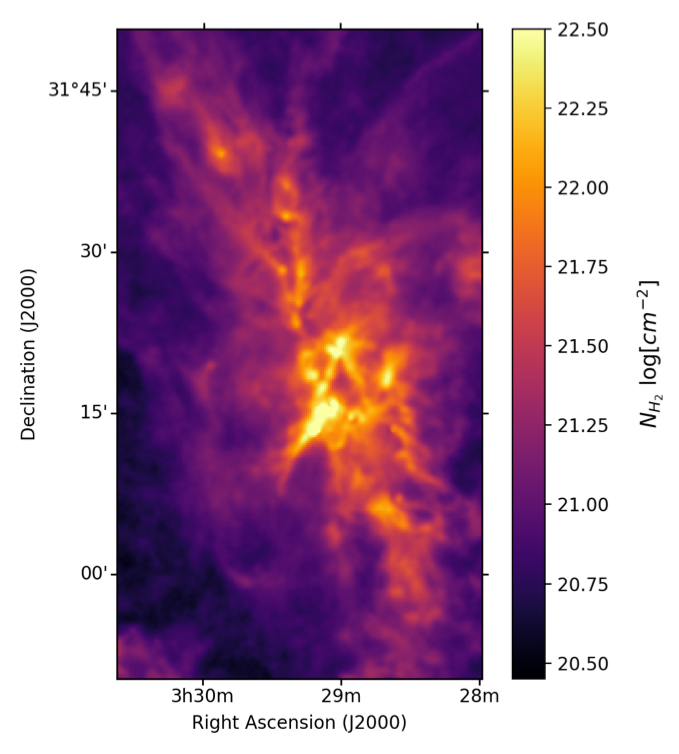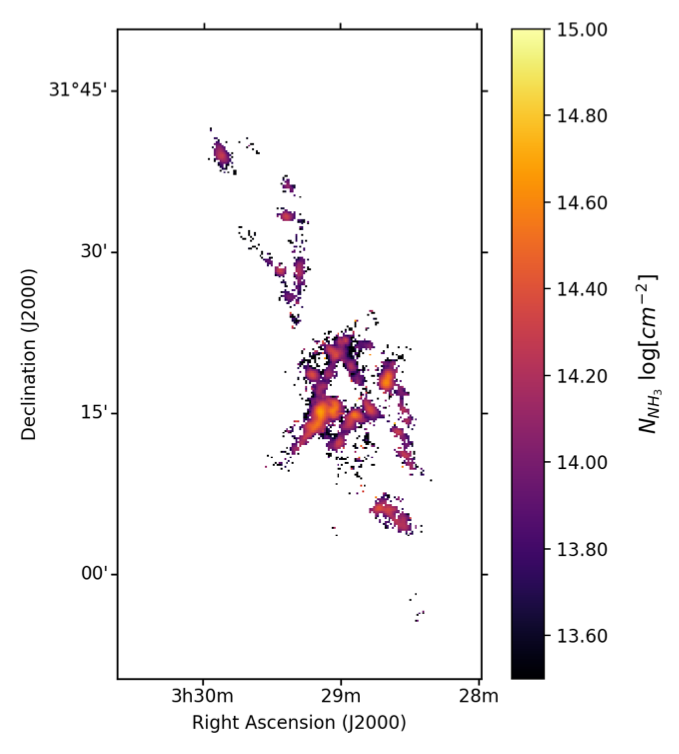Research


Studying the stability of molecular clouds is important for understanding the early stages of star-formation. We use the observational data to compare the kinetic motion of gas with the self-gravity to establish if the structure will collapse and form star. However, we were constrained by insufficient data and techniques to be able to get better estimate on these parameters. My thesis consists of various projects with an aim to understand the stability and strucutre of Interstellar medium, and more specifically, star-forming regions.
HOTT (Herschel Optimized Tau and Temperature) maps
I am creating a python based pipeline to generate dust optical depth and temeprature maps using data from Herschel Space Observatory at low resoution (36.4") and high resolution (18.1"). This is done by fitting the Spectral Energy Distribution (SED) to PACS (160 μm) and SPIRE (250, 350 and 500 μm) frequencies. Additionally, I am preforming a detailed analysis on estimating the uncertainty in the Herschel data. This pipeline is being contrusted with an aim to generate maps for any photometic Herschel data taken in Parallel mode. The resulting HOTT maps for Gould Belt regions available on the HOTT website.
Viral Ratio: Direct estimate of Kinetic and Gravitational Energies
To understand the stability of a molecular regions, we compare the gravitational strength with the kinetic motions of the clouds as a virial ratio. This tell us if the cloud is bounded that will lead to collapse or if it's unbounded. Maps of line tracers are used to provide the kinetic information, whereas the gravitational energy is mainly parameterized by the estimated mass and effective radius of the cloud. I am working the model that allow us to get the direct estimation of gravitational and kinetic energy from the projected data with minimal assumptions. This method has been tested on a simulated data. Currently, I am appying this on Heschel dust optical depth maps and ammonia data from Green Bank Ammonia Survey (GAS).
Addtionaly, I have also derived a method that allow us to extract a cloud from a molecular region with higher accuracy using Abel's Transformation. This method take into account the fact that there is a limb-brightening effect when extracting the cloud and allow us to get the better estimate of the mass of the cloud.
Data from Dragonfly Space Observatory of Gould Belt regions
I have taken optical data of multiple molecular clouds of Gould Belt regions using the Dragonfly Telephoto Array, situated in New Mexico. These molecular cloud complexes are part of a group of clouds that are anywhere form 100 to 400pc away from the Sun. Dragonfly is designed for observations of ultra-low surface brightness. It uses filters in r-band and g-band that correspond to wavelengths of 658 nm and 510 nm, respectively. I am currently in the process of calibrating and reducing these dataset. The aim is to do a multiwavelengh analysis of these region by comparing it with the submillimeter data from Herschel and radio data from GAS survey.
Publications
- Singh, A. & Martin, P. G., “Herschel Optimized Tau and Temperature (HOTT) maps: Uncertainty analysis and robust parameter extraction", 2022, ApJ, 941, 135 (32 pg.)
- Singh, A., Matnzer, C. D., et al., “Are Massive Dense Clumps Truly Subvirial? A New Analysis Using Gould Belt Ammonia Data", 2021, ApJ, 922, 87 (12 pg.)
- Chen, C.-Y., Behrens, E., [et al. including Singh, A.], “Relative alignment between dense molecular cores and ambient magnetic field: the synergy of numerical models and observations”, 2020, MNRAS, 494, 2 (1971 pg.)
- Keown, J., Di Francesco, J., [et al. including Singh, A.], “KFPA Examinations of Young STellar Object Natal Environments (KEYSTONE): Hierarchical Ammonia Structures in Galactic Giant Molecular Clouds”, 2019, ApJ, 884, 4 (45 pg.)
- Singh, A., Matnzer, C. D., & Jumper, P., “Virial Ratio: Direct Estimation from Molecular Cloud Data and the Challenges of Improving Accuracy", 2019, ApJ, 878, 22 (7 pg.)
- Chen, H., Pineda, J. E., [et al. including Singh, A.], “Droplets I: Pressure-Dominated Sub-0.1 pc Coherent Structures in L1688 and B18”, 2019, ApJ, 877, 93 (58 pg.)
- Keown, J., Di Francesco, J., [et al. including Singh, A.], “The Green Bank Ammonia Survey: Observations of Hierarchical Dense Gas Structures in Cepheus-L1251”, 2017, ApJ, 850, 3 (24 pg.)
- Kirk, H., Friesen, R. K., [et al. including Singh, A.], “Dense Cores Under Pressure in Orion A”, 2017, ApJ, 846, 144 (19 pg.)
- Friesen, R. K., Pineda, J. E., [et al. including Singh, A.], “The Green Bank Ammonia Survey (GAS): First Results of NH3 Mapping the Gould Belt”, 2017, ApJ, 843, 63 (26 pg.)